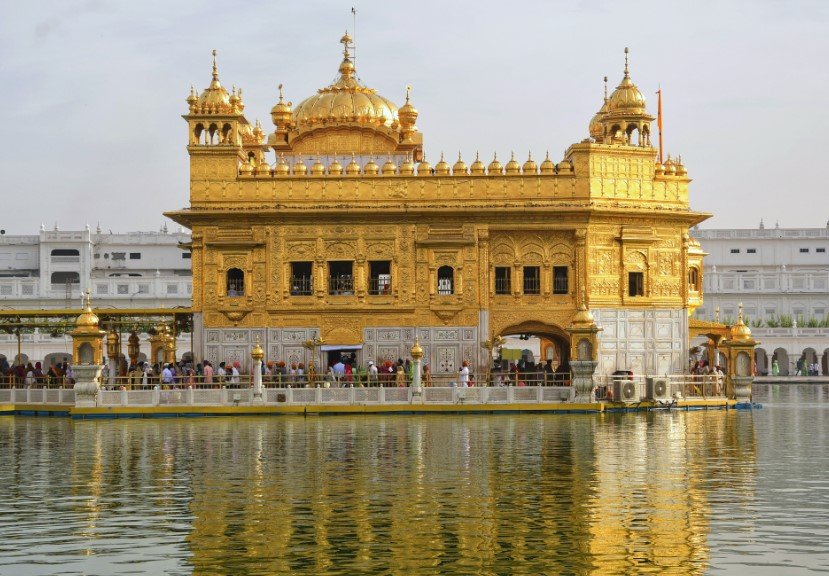The Indian Army has stepped in to clear the air on claims that air defence guns were stationed at the Golden Temple during Operation Sindoor. The shrine’s management and head priest strongly denied these reports, setting off a wave of confusion and debate.
Golden Temple, one of Sikhism’s holiest sites, became the center of an unexpected controversy this week. Some news outlets reported that air defence weapons were deployed at the shrine, supposedly with the consent of the head granthi, Giani Raghbir Singh. The claim came from Lt Gen Sumer Ivan D’Cunha, the army’s air defence chief, who suggested the shrine was prepped against possible drone or missile attacks from across the border.
But, hold on—this didn’t sit well with the shrine’s management or Giani Raghbir himself. They quickly refuted the claims, calling them “propaganda” and “baseless.” The Shiromani Gurdwara Parbandhak Committee (SGPC), which manages the Golden Temple, and the head priest both insisted that no such permission was given, nor were any guns deployed inside the complex.
The army’s own statement on Tuesday seemed to backtrack, saying no air defence guns were actually stationed at the Golden Temple premises. It’s rare to see this kind of public pushback between the military and a religious institution, making this situation particularly sensitive.
The dispute sheds light on the challenges India faces while protecting critical cultural and religious landmarks amid rising security threats. Pakistan’s recent missile and drone activity, especially after the Pahalgam terror attack, has put India’s air defence systems on high alert.
Major General Kartik C Seshadri, commanding the 15 Infantry Division, had earlier mentioned that the Golden Temple was a potential target and that Indian forces successfully intercepted threats to safeguard it. This was a crucial reassurance, especially for a site revered by millions.
But the question remains—how far should security forces go in deploying weapons around such sacred spaces? The army’s initial comments suggested that the top brass were prepared for anything, even if it meant putting air defence guns at the shrine. Yet, the local leadership’s outright denial tells a different story. Giani Raghbir pointed out he was abroad on leave during the reported time frame, which further complicates the narrative.

Behind the Headlines: What This Means for Security and Trust
This clash is more than just about guns and permits; it’s about trust. The SGPC has urged a thorough probe into the matter, hinting that if any of its members were involved in leaking false information or miscommunicating with the army, they would face consequences. The call for accountability is a sign that both religious and military authorities want to keep things transparent.
Meanwhile, the Indian Army seems to be walking a tightrope — wanting to reassure citizens that sacred sites are protected, while respecting sensitivities around religious institutions. Such coordination is no small feat.
It’s worth noting that after recent border skirmishes and terror attacks, India’s defense strategies have become more visible, sometimes sparking debate. The use of advanced technology and weapons near civilian and cultural areas is a tricky balance to strike. The Golden Temple, with its deep emotional and spiritual significance, naturally requires delicate handling.
Operation Sindoor’s Wider Context and Implications
Operation Sindoor, which followed the devastating April 22 Pahalgam terror attack, marks India’s assertive response to Pakistan-sponsored terrorism. The military and government have made it clear that they won’t tolerate attacks on Indian soil.
To press their case internationally, the Indian government has dispatched multi-party delegations to several countries, aiming to expose Pakistan’s role in sponsoring terror. These groups carry evidence and dossiers to convince the world that India’s security concerns are very real.
This backdrop adds a layer of urgency to the army’s defensive postures domestically, including around places like the Golden Temple. Protecting these sites isn’t just about physical security but also about preserving the nation’s cultural fabric.
Security and Sensitivity: Finding the Right Balance
The row over air defence deployment highlights the tricky balancing act India faces. Devotees continue to flock to the Golden Temple, performing rituals and paying respects as usual. The shrine remains a symbol of peace and spirituality.
Yet, threats from drones and missiles aren’t fiction anymore; they are very real. India has witnessed increased drone incursions and missile threats along its borders, which means military preparedness has to be top-notch.
Still, the deployment of weapons near religious spaces risks offending the faithful or creating tension. Leaders and officials must tread carefully to avoid stirring controversy while ensuring safety.
Clearly, India is stepping up its vigilance, with a focus on protecting key sites.
The Golden Temple episode is a reminder that even in the face of modern warfare threats, cultural respect and communication remain critical. With tensions still simmering in the region, transparency and cooperation between the military and religious authorities are key to maintaining harmony.
